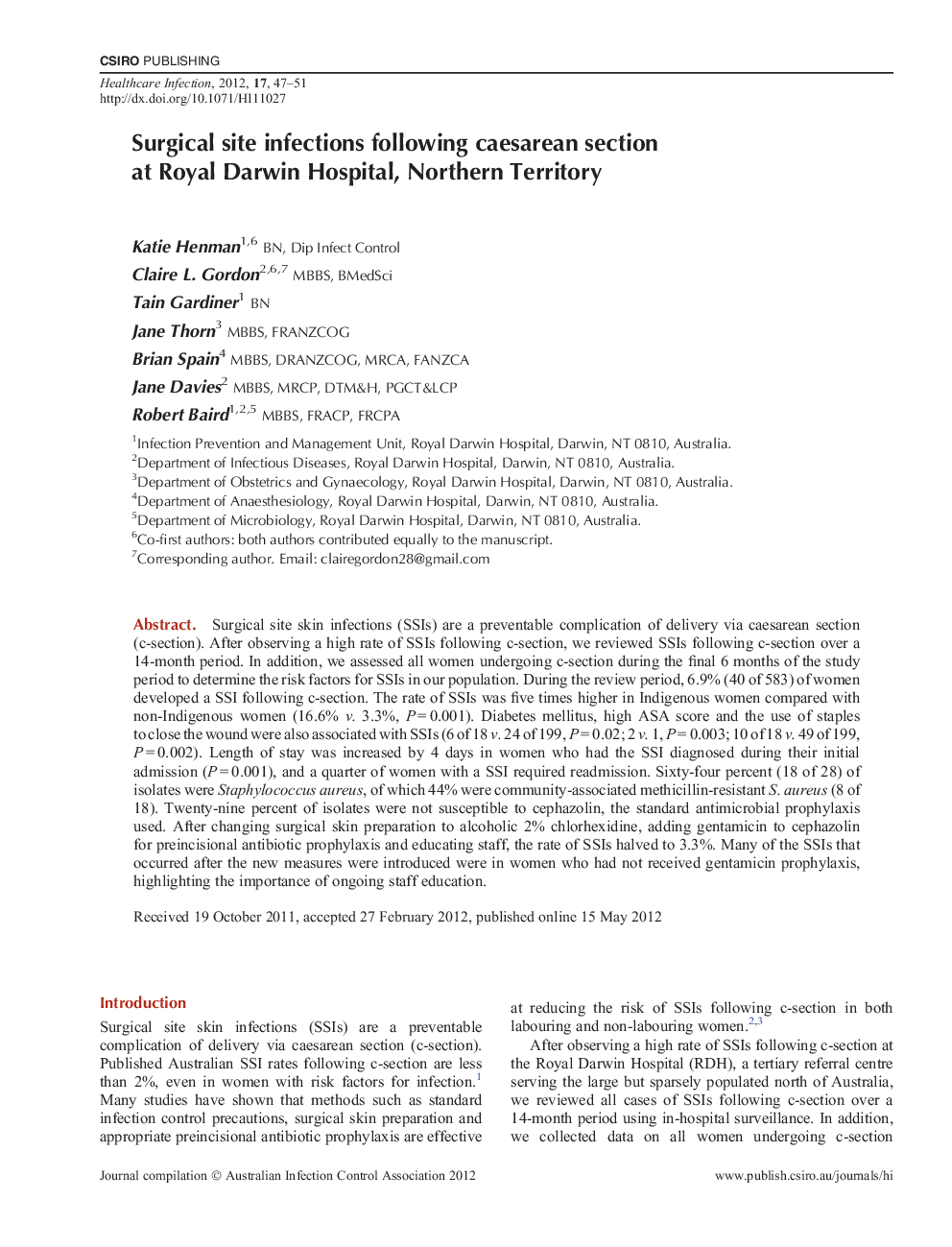| Article ID | Journal | Published Year | Pages | File Type |
|---|---|---|---|---|
| 2682842 | Healthcare infection | 2012 | 5 Pages |
Surgical site skin infections (SSIs) are a preventable complication of delivery via caesarean section (c-section). After observing a high rate of SSIs following c-section, we reviewed SSIs following c-section over a 14-month period. In addition, we assessed all women undergoing c-section during the final 6 months of the study period to determine the risk factors for SSIs in our population. During the review period, 6.9%(40 of 583) of women developed a SSI following c-section. The rate of SSIs was five times higher in Indigenous women compared with non-Indigenous women (16.6% v. 3.3%, P = 0.001). Diabetes mellitus, high ASA score and the use of staples to close the wound were also associated with SSIs (6 of 18 v. 24 of 199, P = 0.02; 2 v. 1, P = 0.003; 10 of 18 v. 49 of 199, P = 0.002). Length of stay was increased by 4 days in women who had the SSI diagnosed during their initial admission (P = 0.001), and a quarter of women with a SSI required readmission. Sixty-four percent (18 of 28) of isolates were Staphylococcus aureus, of which 44% were community-associated methicillin-resistant S. aureus (8 of 18). Twenty-nine percent of isolates were not susceptible to cephazolin, the standard antimicrobial prophylaxis used. After changing surgical skin preparation to alcoholic 2% chlorhexidine, adding gentamicin to cephazolin for preincisional antibiotic prophylaxis and educating staff, the rate of SSIs halved to 3.3%. Many of the SSIs that occurred after the new measures were introduced were in women who had not received gentamicin prophylaxis, highlighting the importance of ongoing staff education.
